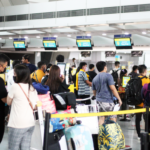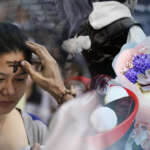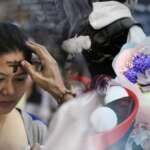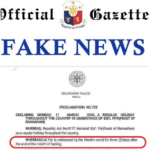A Closer Look at Philippines
Philippines Flag

Philippines Formation Date
Philippines independence date in format: June 12, 1898
Philippines Capital Name
The capital of the Philippines is Manila.
Philippines Neighbours
Exploring Philippines
Discover the Enchanting Beauty of the Philippines
The Philippines, located in Southeast Asia, is a country known for its stunning natural landscapes, rich history, and vibrant culture. It is an archipelago made up of over 7,000 islands, making it one of the largest island nations in the world. Its name comes from Spanish explorer Ruy López de Villalobos, who named it after King Philip II of Spain. With its diverse geography, fascinating history, and warm hospitality, the Philippines is a must-visit destination for travelers seeking a unique and unforgettable experience.Key Takeaways:
- The Philippines is an archipelago made up of over 7,000 islands.
- It was named after King Philip II of Spain.
- The country has a diverse geography and rich history.
- The Philippines is known for its warm hospitality and vibrant culture.
Geography:
The Philippines is a land of contrasts, with towering mountains, lush rainforests, white sandy beaches, and crystal clear waters. The country's three main geographical divisions are Luzon, Visayas, and Mindanao. Luzon is the largest island and is home to the capital city of Manila. It is also where the country's highest peak, Mount Apo, can be found. The Visayas region is known for its beautiful beaches and stunning coral reefs, while Mindanao is known for its rugged terrain and abundant natural resources. The Philippines is also rich in natural resources such as timber, minerals, and marine life. Its tropical climate makes it an ideal location for agriculture, with rice being the main crop. The country is also home to diverse flora and fauna, including endemic species like the Philippine eagle and tarsier. The Philippines has a tropical climate, with two distinct seasons - the wet season from June to November and the dry season from December to May. The country is also prone to typhoons, especially during the wet season. However, the warm and sunny weather throughout most of the year makes it an ideal destination for beachgoers and outdoor enthusiasts.Origin and History:
The Philippines has a rich history that dates back thousands of years. It was once home to ancient civilizations such as the Austronesian people and the Malayo-Polynesian group. In the 16th century, Spanish explorer Ferdinand Magellan arrived in the Philippines, marking the beginning of Spanish colonization. The country was under Spanish rule for over 300 years until it was ceded to the United States in 1898. During World War II, the Philippines played a significant role as a strategic location for both Japanese and American forces. In 1946, the country gained its independence from the United States and has since then undergone various political and social changes.Government and Politics:
The Philippines is a democratic country with a presidential system of government. The President serves as both head of state and head of government, with a term limit of six years. The country is divided into three main island groups, each with its own set of provinces, cities, municipalities, and barangays (villages). The Philippines also has diplomatic relations with various countries and is an active member of international organizations such as the United Nations and ASEAN.Commerce and Economy:
The Philippines has a developing economy with a strong focus on agriculture, manufacturing, and service sectors. Its main exports include electronics, garments, coconut products, and fruits. The country also has strong trade relations with its neighboring countries in Southeast Asia and is a member of various trade agreements such as ASEAN Free Trade Area and the World Trade Organization. The Philippine peso is the country's currency, and its value is closely tied to the US dollar. The cost of living in the Philippines is relatively low compared to other countries, making it an affordable destination for travelers.Demographics:
The Philippines has a population of over 100 million people, making it the 13th most populous country in the world. The majority of the population is of Malay descent, with Chinese, Spanish, and American influences. The country has a young population, with a median age of 25 years old. The main language spoken is Filipino, which is based on Tagalog, but there are also over 170 regional dialects spoken throughout the country.Culture:
The Philippines has a diverse and vibrant culture influenced by its history and various ethnic groups. The arts, music, and literature are highly valued in Filipino culture, with traditional dances such as Tinikling and Singkil being popular forms of expression. The country also celebrates numerous festivals throughout the year, with colorful parades and street parties showcasing its rich cultural heritage.Languages and Religion:
Filipino (based on Tagalog) and English are the official languages of the Philippines. However, there are over 170 regional dialects spoken throughout the country. The dominant religion in the Philippines is Roman Catholicism, brought by Spanish colonizers in the 16th century. Other major religions include Islam, Protestantism, and Buddhism. Religion plays a significant role in Filipino society, influencing various aspects of life such as customs, traditions, and holidays. Christmas and Holy Week (Easter) are two of the most celebrated holidays in the country.Education and Healthcare Systems:
The Philippines has a well-established education system with a literacy rate of over 95%. Primary education is compulsory, and the country has a high enrollment rate in both primary and secondary schools. The Philippines also has numerous universities and colleges, with a strong emphasis on English language education. The healthcare system in the Philippines is a mix of public and private facilities. The government provides free healthcare services to its citizens, but the quality may vary depending on the location. Private hospitals and clinics offer better facilities and services but at a higher cost.Sports and Recreation:
Sports are an integral part of Filipino culture, with basketball being the most popular sport in the country. Other popular sports include boxing, volleyball, and football. The Philippines has also produced world-renowned athletes such as Manny Pacquiao, a professional boxer, and Hidilyn Diaz, an Olympic weightlifter. Outdoor activities such as hiking, diving, and surfing are also popular among locals and tourists alike. With its stunning natural landscapes and diverse terrain, the Philippines offers endless opportunities for adventure and recreation.Tourism:
The Philippines is a paradise for travelers, with its pristine beaches, vibrant cities, and rich cultural heritage. Some of the must-visit tourist attractions include Boracay Island, Palawan Island, and the historic city of Vigan. The country also offers a wide range of activities such as island hopping, scuba diving, and exploring ancient ruins. The tourism industry is a significant contributor to the Philippine economy, with over 8 million international tourists visiting the country in 2019. The government continues to invest in improving tourism infrastructure and promoting sustainable tourism practices to attract more visitors.Travel Information for Foreign Visitors:
If you are planning to visit the Philippines, there are a few things you need to know beforehand. US citizens do not need a visa for stays up to 30 days but will need a valid passport. Other nationalities may require a visa or entry permit, so it is best to check with the Philippine Embassy or Consulate in your country. The Philippines is a relatively safe country, but it is always advisable to take necessary precautions while traveling. It is also essential to respect local customs and etiquette, such as removing your shoes when entering someone's home and avoiding public displays of affection. The currency used in the Philippines is the Philippine peso (PHP), and credit cards are widely accepted in major cities and tourist areas. However, it is always best to have some cash on hand, especially when visiting more remote areas.Quotes:
- "It's more fun in the Philippines." - Department of Tourism slogan - "The Philippines is a country of smiles and warm hearts." - Lea Salonga, Filipino actress and singer - "I am a Filipino born to freedom, and I shall not rest until freedom shall have been added unto my inheritance." - Carlos P. Romulo, Filipino diplomat and statesmanConclusion:
The Philippines is a diverse and enchanting country that offers something for every type of traveler. Its stunning natural landscapes, rich history, vibrant culture, and warm hospitality make it a must-visit destination. With ongoing developments in infrastructure and sustainable tourism practices, the future looks bright for this tropical paradise. So pack your bags and get ready to discover the beauty of the Philippines.Philippines Highest Point Name
The highest point in the Philippines is Mount Apo. It is a potentially active stratovolcano located on the island of Mindanao in the Philippines. Its summit is 2,954 metres (9,692 ft) above sea level.
Philippines Capital Longitude
120.98422° E
Philippines Capital Latitude
14.6042° N
Philippines Official Languages
The official languages of the Philippines are Filipino and English. Filipino is based on the Tagalog language, and is the standard for communication among the different ethnic groups that inhabit the country. English is also widely spoken, particularly in business and higher education. Other recognized regional languages include Aklanon, Cebuano, Hiligaynon (Ilonggo), Ilocano, Kapampangan, Pangasinan, Bicolano, Waray, and several other languages.
Philippines Ethnic Groups
The Philippines is a culturally diverse nation, with a population composed of many ethnic groups. The largest are the ethnic Filipino majority, who are of Austronesian decent and comprise around 95% of the population. Other ethnic groups include Chinese, Spanish (who arrived with the colonial era), Indian, American, Arab, and other Southeast Asian ethnicities. Indigenous peoples also contribute to the rich mix, with the Igorot, Mangyan, Aeta, Dumagat and many others making up around 1.5% of the population. Each of these groups contributes to the culture and way of life in the Philippines, with unique languages, beliefs, and customs.
Philippines Religions
The two predominant religions in the Philippines are Christianity and Islam. Christianity is mainly Roman Catholicism which was introduced by Spanish colonialists, and Protestant denominations were brought by American missionaries. About 80-85% of the population are Christian, mostly Catholic. Islam is the religion of about 5% of the population. Other faiths include Buddhism, Hinduism, Animism, and minority religions like Baha'i, Iglesia ni Cristo, and the indigenous belief system of tribal groups like the Ifugao and Kalinga. Tolerance and mutual respect between religious groups are deeply entrenched in the country's culture and fundamental law.
Philippines Total Area
The total area of the Philippines is 115,831 square miles (300,000 square kilometers).
Philippines Land Area
The total land area of the Philippines is approximately 300,000 square kilometers (116,000 square miles).
Philippines Water Area
According to the Philippines National Statistical Coordination Board, the Philippines has a total water area of 220,000 square kilometers, or about 8.5% of the total land area. This includes inland and coastal waters.
Philippines Total Population
As of July 2020, the population of the Philippines is estimated to be 109,581,078 people.
Philippines Currency Name
The currency used in the Philippines is the Philippine Peso (PHP).
Philippines Currency Code
The Philippines country currency code is PHP.
Philippines Currency Symbol
The currency symbol for the Philippines is ₱.
Philippines Time Zones
- UTC+08:00
The Philippines is on Eastern Standard Time (UTC+8) throughout the year. Daylight Saving Time is not observed by the country since Philippine Standard Time is 8 hours ahead of the Coordinated Universal Time (UTC). This means that the timezone is not shifted forward by 1 hour and Philippine Standard Time (PST) is used for the entire year.
Philippines Calling Code
The Philippines country calling code is +63
Philippines Internet TLD
www.aveholidays.ph
How to Say "Philippines" In Different Languages?
- Bengali
- ফিলিপাইন (bn-BD)
- Mandarin
- 菲律宾 (zh-Hans-CN)
- Arabic
- الفلبين (ar-EG)
- French
- Philippines (fr-FR)
- German
- Philippinen (de-DE)
- Hindi
- फ़िलीपींस (hi-IN)
- Indonesian
- Filipina (id-ID)
- Persian
- فیلیپینی (fa-IR)
- Japanese
- フィリピン (ja-JP)
- Spanish
- Filipinas (es-MX)
- Nepali
- फिलिपिन्स (ne-NP)
- Yoruba
- Filipini (yo-NG)
- Polish
- Filipiny (pl-PL)
- Portuguese
- Filipinas (pt-PT)
- Russian
- Филиппины (ru-RU)
- Korean
- 필리핀 (ko-KR)
- Thai
- ประเทศฟิลิปปินส์ (th-TH)
- Turkish
- Filipinler (tr-TR)
- Uzbek
- Filippinlar (uz-UZ)
- Vietnamese
- Philippin (vi-VN)
Philippines Popular Holidays
- Eid-al-Fitr
- Varies
- Eidul Adha
- Varies
- New Year's Day
- 1 January
- People Power Revolution Day
- 25 February
- Araw ng Kagitingan
- 9 April
- Maundy Thursday
- 9 April
- Good Friday
- 10 April
- Labor Day
- 1 May
- Independence Day
- 12 June
- Ninoy Aquino Day
- 21 August
- National Heroes Day
- Last Monday of August
- Bonifacio Day
- 30 November
- Christmas Day
- 25 December
- Rizal Day
- 30 December


















